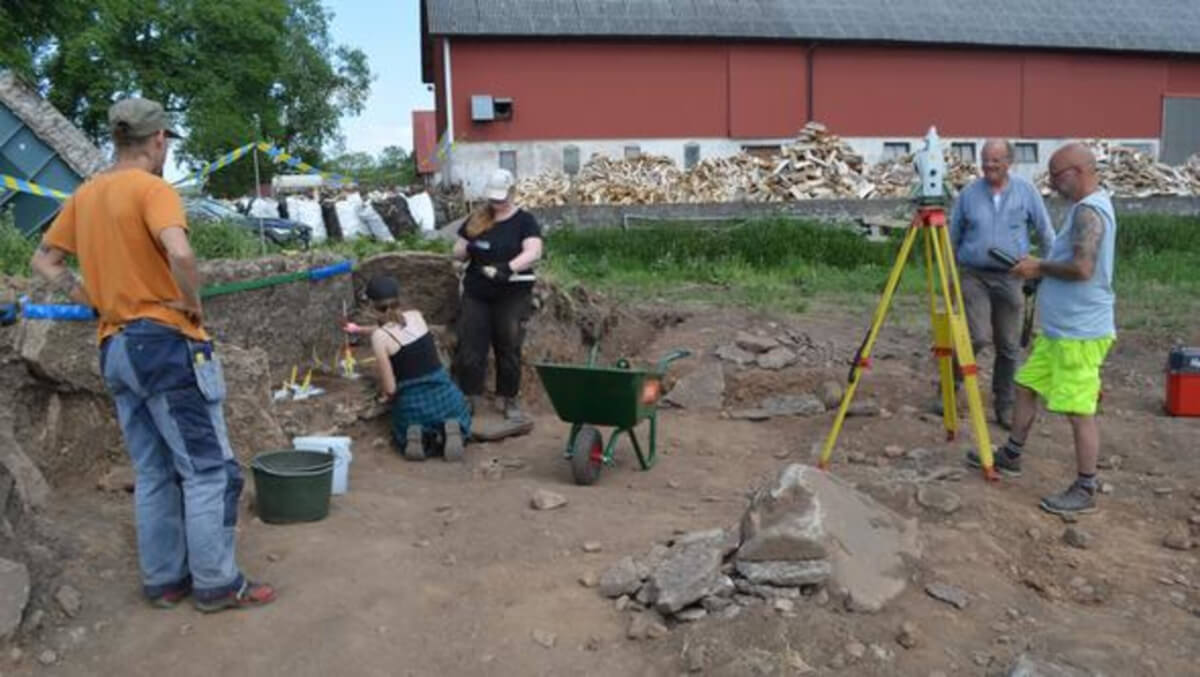FALKOPING, Sweden — A head-scratching discovery at a Stone Age burial chamber in Sweden is leaving archaeologists stumped. When researchers from the University of Gothenburg excavated the ancient site at Tiarp, they found that the skeletal remains of a dozen people were all missing their skulls.
“It’s an early grave which dates to the Early Neolithic period, about 3500 BCE,” notes study author Karl-Göran Sjögren, an archaeologist at the University of Gothenburg, in a university release.
This excavation, conducted in partnership with Kiel University, has brought to light a dolmen — a type of stone burial chamber that has remained untouched since its construction in the Stone Age. The site offers new insights into Early Neolithic rituals and the early farming communities of Scandinavia, a time when agriculture was taking root in the region.
One of the most puzzling aspects of this discovery is the incomplete skeletal remains found within the chamber.
“Skulls and large bones are missing and may have been removed from the grave. We don’t know whether that has to do with burial rituals or what’s behind it,” explains Sjögren.

This unusual finding differs from typical Neolithic burial sites, where smaller bones are often the ones missing. The remains, studied by Torbjörn Ahlström, professor of osteology at Lund University, have been identified as belonging to at least 12 individuals ranging from infants to the elderly. Despite the absence of visible injuries, the cause of death remains a mystery, pending further DNA analysis to identify any potential diseases.
The region of Falbygden, where Tiarp is located, is notable for its rich Neolithic heritage, marked by over 250 passage graves dating from around 3300 BCE. These graves were built by early farming communities that had settled in the area roughly 500 years before the construction of the Tiarp dolmen.
“They lived by growing grain and keeping animals and they consumed dairy products,” notes Sjögren, highlighting the agricultural lifestyle of the people buried in the dolmen.
One of the key objectives of this research is to understand the familial relationships among those buried in the grave.
“The preliminary DNA results show that the DNA in the bones is well preserved. This means we will be able to reconstruct the family relationships between the people in the grave and we are working on that now,” Sjögren says.
This effort is part of a larger study detailing the Tiarp Backgården dolmen and its significance in the broader context of early megalithic tombs across Scandinavia and Northern Central Europe.

This dolmen stands out not only for its age but also for its unique construction, featuring a small niche at each end — a characteristic unseen in other graves in Falbygden. This feature, along with the chamber’s antiquity, underscores the dolmen’s importance as a cultural and historical landmark, shedding light on the rituals and lifestyles of Scandinavia’s earliest farming communities.
“But this dolmen is older. It’s about 200 to 150 years older than the passage graves, making it one of the oldest stone burial chambers in Sweden and across the whole of Scandinavia,” says Sjögren.
As research continues, the Tiarp dolmen promises to offer further insights into the Neolithic period in Scandinavia, contributing to our understanding of early human society, rituals, and the transition to settled agricultural life.
The study is published in the Journal of Neolithic Archaeology.
